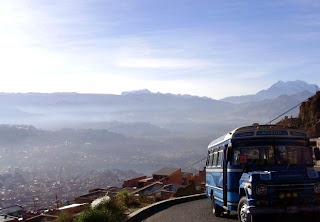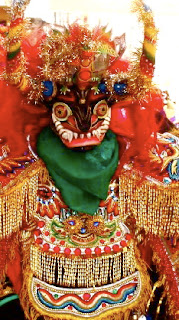This month, the Kiva Passport Series will focus on Bolivia. Bolivia is a beautiful country in South America - filled with bright colors, festivals, beautiful people, good food, gorgeous landscapes, and several Kiva Field Partners. Follow us this month while we learn about the country, their microfinance sector, and hear a story about a borrower in Bolivia!
Photo Credit: Phillip H Ross
The People:
Bolivia is a Latin American country bordered by Peru, Brazil, Paraguay, Chile, and Argentina. While Bolivia is a Spanish-speaking country, it also has a large indigenous population who maintain a variety of different native cultures and languages. Over 10 million people live in Bolivia, with a 1.694% population growth rate. 67% of the population lives in urban areas, with 2.2% more migrating to cities every year! The average life expectancy is 67 years and an average woman has three children. 95% of the population is Roman Catholic and in terms of educational attainment, 93% of boys and about 80% of girls (over 15 yrs old) are literate, with average years of schooling at 14 years for both genders.
Bolivia is home to many beautiful, colorful festivals! Here are some photos from festivals last year:
Photo Credit: Arturo Rodriguez
Photo Credit: Arturo Rodriguez
History:
The Inca Empire occupied much of the Andean region and stretched across Bolivia throughout the 15th and 16th centuries. In the 1530's the Spanish arrived and proceeded to conquer the Inca Empire. After a long Spanish ruling, Bolivia eventually gained independence from Spain in 1825. However, it wasn't until 1982 that the first democratic government was set up - and since then they have been faced with problems of poverty, social unrest, and illegal drugs. (Bolivia is the third largest producer of cocaine in the world, estimated at 120 metric tons of pure cocaine being produced in 2007.) Bolivian history includes a long series of over 200 coups and countercoups. In 2005 and then again in 2009, Evo Morales won presidency and has been leading the country to positive economic and social change. Bolivia is a republic, and enacted a constitution on February 7th, 2009. They call themselves a "Social Unitarian State".
Economy:
Bolivia is one of the poorest and least developed countries in Latin America. The economy hit a really hard period of economic crisis in the 1980's and has spent significant time rebounding from the fall. Political instability and tensions have made growth in the past difficult, but the last few years, Bolivia has seen a strong upswing and growth rates between 3% and 6%.
Bolivia has a GDP of almost $48 billion (12% from agriculture, 38% industry, and 50% services) and a per capita GDP of about $4,800. 30.3% of the population lives below $2/day and the country has an unemployment rate of about 6.5%, but also sees high underemployment in urban centers.
This photo is overlooking La Paz, Bolivia's capital - and home to over 1.6 million people!
Photo Credit: Phillip H Ross
Geography and Climate:
Bolivia has over 1 million square km of land (a bit under 3 times the size of Montana). The country is home to both, a part of the Andes Mountains and a part of the Amazon Basin. Its climate ranges from hot and tropical to cold and semiarid. Only 2.78% of the land in Bolivia is arable. They are facing serious ecological concerns including deforestation, soil erosion, desertification, loss of biodiversity, and industrial pollution of drinking and irrigation waters.
Photo Credit: Phillip H Ross
Stay tuned this month to learn about the Microfinance Industry in Bolivia and hear stories from those directly involved in Microfinance. Kiva has several field partners in Bolivia that we look forward to sharing exciting updates and stories about!
PREVIOUS ARTICLE
See Microfinance in Action: Apply today to be a Kiva Fellow! →NEXT ARTICLE
Exciting news from a Field Partner in Uganda: BRAC →



















